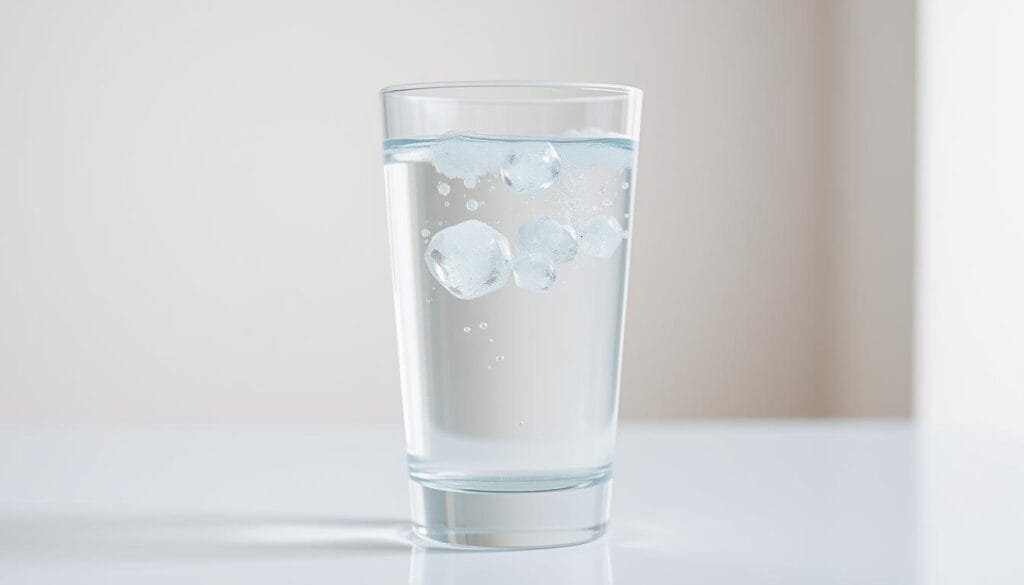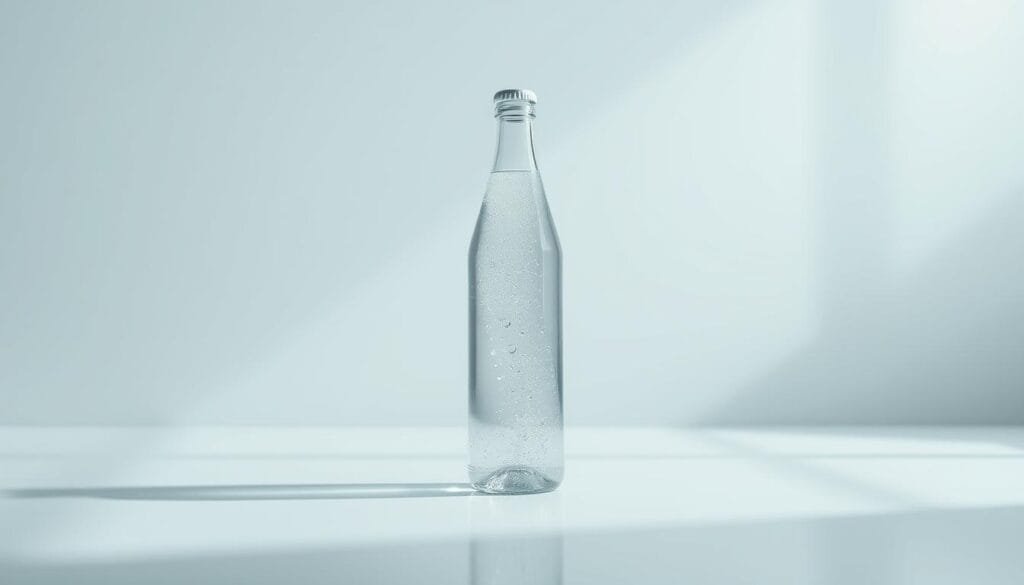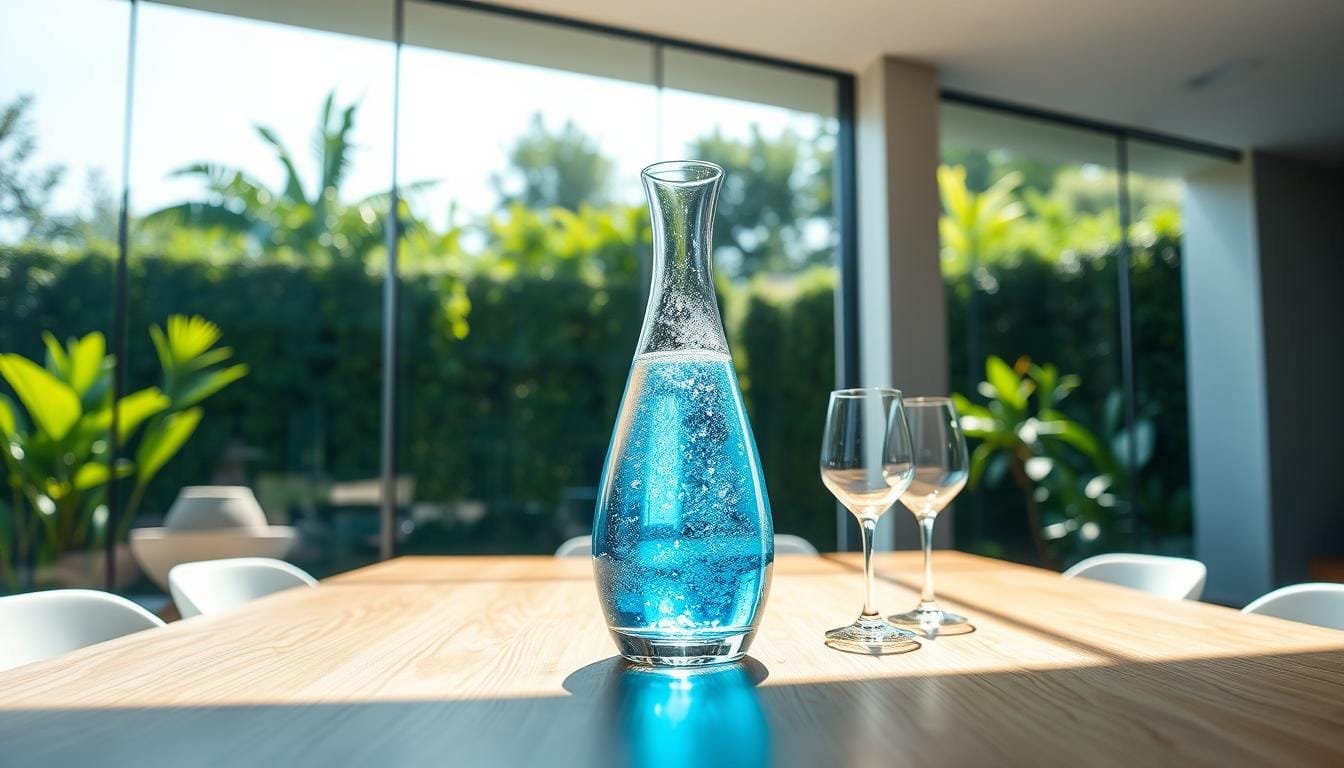Currently Empty: RM0.00
Can a small bottle change how a busy leader thinks, recovers, and performs? This article opens that question for Malaysia’s executive class.
The case study profiles a premium beverage aimed at measurable gains in focus, resilience, and recovery. It frames claims with science about cellular protection and energy support while pointing to practical checks like dissolved hydrogen levels, negative ORP targets, and sealed packaging.
Wellness Concept offers concierge guidance by WhatsApp at +60123822655. Replies arrive during business hours: Monday–Friday 9:30 am–6:30 pm and Saturday–Sunday 10 am–5 pm. Leaders can get fast answers before procurement.
The goal is simple: present a decision-support tool, not hype. Readers will find clear metrics, brand-fit notes, and quick implementation steps tailored to Malaysia’s premium market.
Key Takeaways
- Executive-focused review of efficacy signals and packaging integrity.
- Science-grounded overview of cellular protection and energy support.
- Practical KPIs: focus, fatigue reduction, and recovery speed.
- Concierge contact: Wellness Concept via WhatsApp +60123822655 during listed hours.
- Actionable procurement checkpoints for brand-conscious leaders in Malaysia.
Executive summary: Why hydrogen-infused water matters for Malaysia’s high achievers
For busy Malaysian leaders, a portable beverage can offer low‑friction support for daily stamina and recovery. Early studies link dissolved gas in solution to reduced inflammation, faster post‑exercise recovery, and modest metabolic gains.
When delivered at therapeutic levels (around 0.5 ppm) and preserved with sealed packaging, this product can help reduce oxidative stress without disrupting useful cellular signals. The agent diffuses quickly and is eliminated safely, so it does not accumulate in the body.
- Practical use: simple to drink during travel, meetings, or workouts.
- Key benefits: potential reductions in perceived fatigue and clearer mental focus.
- Rollout tip: pilot with a small team and track trend‑level changes over days.
The article turns science into action steps: what to buy, when to drink, and how to verify dissolved levels. For quick product selection or executive outreach, leaders can WhatsApp Wellness Concept at +60123822655 Monday–Friday 9:30 am–6:30 pm and Saturday–Sunday 10 am–5 pm.
Case background: Wellness Concept’s approach to Hydrogen water for CEOs and entrepreneurs
Wellness Concept’s model blends evidence, convenience, and concierge support to help leaders trial functional beverages with measurable expectations. The program prioritizes dissolved H₂ levels (ppm), sealed packaging, and simple logistics so a team can compare formats quickly.

Company profile: Wellness Concept acts as a procurement partner and advisor. They provide WhatsApp access at +60123822655 during business hours: Monday–Friday 9:30 am–6:30 pm and Saturday–Sunday 10 am–5 pm. Consultations fit executive calendars and focus on pilot design.
- Target personas: founders, senior leaders, and fast-scaling teams seeking minimalist health solutions.
- Options include ready-to-drink cans, tablets, and portable generators to achieve therapeutic ppm and stable ORP.
- Packaging checks favor sealed aluminum and tested systems to prevent gas loss.
“The rollout is structured: short pilot, clear metrics, and feedback loops that refine supply choices.”
The company frames health guidance as supportive, not curative, and aligns procurement with brand, travel, and meeting needs across Malaysia’s premium market.
Mechanisms that move the needle: how hydrogen molecules work in the body
Small, fast-diffusing gas molecules cross membranes to act where larger antioxidants seldom travel. This makes their selective antioxidant action relevant to short, intense periods of work or training.
Selective antioxidant action against hydroxyl radicals
At the cellular level, these molecules target the most reactive radicals. They neutralize hydroxyl species while sparing signaling agents like nitric oxide and hydrogen peroxide.
This preserves normal cellular messages and helps maintain mental clarity during back-to-back meetings.
Mitochondrial protection, energy production, and mental focus
Inside mitochondria, the agent can reduce lipid peroxidation and stabilize function. It supports Nrf2 pathways and boosts enzymes such as glutathione and catalase.
- They diffuse into tissues, even the brain, reaching sites other antioxidants miss.
- They lower pro-inflammatory cytokines (TNF-α, IL-6) and may reduce lactic acid after exercise.
- Dissolved levels starting near 0.5 ppm with negative ORP can mark therapeutic ranges.
“The gas is exhaled or cleared; it does not accumulate, making timing practical for daily use.”
Executives in Malaysia can WhatsApp Wellness Concept at +60123822655 to translate these mechanisms into routine timing and dosing during listed office hours.
From production to performance: methods, packaging, and product integrity
Preserving dissolved gas during manufacture and storage is the critical link between lab results and real‑world benefit.
Electrolysis and gas infusion: delivering therapeutic ppm
Electrolysis splits water into H2 and O2, leaving dissolved H2 in solution. Practical targets start at ≥0.5 ppm and an ORP between -200 and -600 mV.
Other methods include magnesium reactions and high‑pressure infusion. Electrolysis and pressure infusion are the most consistent production methods when quality systems are present.
Aluminum cans and sealed systems to preserve potency
Because hydrogen escapes easily, sealed aluminum cans or multi‑layer pouches make a measurable difference. Brands that invest in robust packaging lock in dissolved levels until opening.

On-the-go formats: generators, tablets, and ready-to-drink
Generators and cartridges give executives autonomy while traveling. Tablets using magnesium yield quick ppm but can change taste or acidity; buyers should review by‑products like magnesium hydroxide.
- Checks: specify ppm at consumption, shelf life, and storage instructions.
- Verification: batch testing, independent ppm reports, and leak tests protect product integrity.
- Fit: ready‑to‑drink for meetings, generators for power users, tablets as backup.
| Format | Typical ppm | Retention | Best use |
|---|---|---|---|
| Electrolysis device | 0.5–1.2 ppm | High when fresh | Home/office prep |
| Pressure‑infused cans | 0.5–0.8 ppm | High until opened | Travel, boardroom |
| Magnesium tablets | 0.6–1.5 ppm | Variable after activation | Backup, field use |
| Cartridges/generators | 0.5–1.0 ppm | Controlled on demand | Executive travel kits |
Procurement tip: prioritize methods that state ppm, ORP, and storage life.
For tailored procurement advice—stock readiness, device selection, and travel kits—contact Wellness Concept on WhatsApp +60123822655 during business hours (Mon-Fri 9:30 am-6:30 pm; Sat-Sun 10 am-5 pm).
Hydrogen water for CEOs and entrepreneurs: implementation and outcomes
A brief, repeatable beverage ritual can slot into busy calendars with low effort and measurable tracking.
Protocol design: timing, dosage, and consumption during high-pressure weeks
A practical high‑pressure protocol starts with one serving (300–500 ml) in the morning before focused work. Take a second serving 30–60 minutes before a key meeting. Optionally, have one post‑training to aid recovery.
Target products that state ≥0.5 ppm at time of drinking. If using generators or tablets, prepare close to consumption to capture the short-lived peak. On travel days, pack sealed cans or a compact generator to keep the routine consistent.
Teams report steadier energy and a reduced afternoon dip rather than stimulant-like spikes. Many note clearer focus during long agendas and quicker recovery after exercise.
Post-exercise intake may ease perceived soreness by moderating lactic acid–related heaviness, allowing a faster return to baseline the next day.
Practical tip: run a small pilot (executive assistant, COO, CTO) for one week and track sleep, fatigue, and meeting performance.
- Drink promptly after opening or preparation; hydrogen diffuses away if left standing.
- Pair intake with standard hydration and nutrition; this complements foundational habits.
- Adopt light, consistent routines over a year; review monthly and refine timing around peak cognitive blocks.
Support: Leaders can message Wellness Concept via WhatsApp +60123822655 to receive a personalized weekly protocol aligned with their calendar and business hours support.
Technology and market context: lessons from hydrogen innovation and brands
Lessons from clean-energy innovators reveal how system design and finance drive reliable gas production at scale.
Next Hydrogen’s growth story shows why beverage production needs more than a recipe. The company redesigned electrolyzers, raised significant capital, and scaled a compact team to deliver consistent output.
That trajectory matters to buyers. When a production partner masters electrolysis and systems control, dissolved hydrogen levels become predictable and verifiable.
Electrolysis at scale: insights from the clean energy sector
Industrial electrolysis teaches rigorous QA, process control, and the role of finance in commercialization. HSBC’s support via tailored credit and green deposits helped Next Hydrogen move from lab tests to regular production runs.
Consumer trends in beverages and premium wellness products
Premium buyers prefer sealed aluminum cans and high-pressure infusion because these formats retain volatile gas. Brands that publish specs, third-party testing, and clear date codes signal maturity in the market.
- Look for production transparency: ppm at fill, ORP ranges, and shelf-life by date code.
- Assess total cost of ownership: devices, cartridges, and refill cycles matter more than unit price.
- Choose brands that pair elegant design with verified systems—this matches executive preferences in Malaysia.
“Procurement roadmaps should weigh system reliability, partner credit, and verified production data.”
For a concise vendor shortlist and procurement roadmaps aligned with corporate wellness goals, contact Wellness Concept on WhatsApp at +60123822655 during business hours.
Risk management and buyer’s checklist for Malaysian business leaders
Risk-aware buyers use clear checklists to separate hopeful marketing from verifiable product claims.
The first rule is dosing and safety. Aim for a therapeutic level of ≥0.5 ppm at the moment of drinking. Effects are subtle and build over days; avoid brands that promise cures.
Separating science from myths: dosing, safety, and realistic expectations
Safety is favorable. The gas does not accumulate and is cleared rapidly. Use should complement medical care, not replace it.
Myths to ignore: more always equals better, or that this is the same as alkaline products. Set realistic goals: resilience and clearer focus rather than miracles.
Quality signals: dissolved concentration, packaging, and brand credibility
Demand transparency. Request ppm at fill and at best-before date, negative ORP ranges, storage guidance, and batch test reports.
Packaging matters. Sealed aluminum cans or multi-layer pouches retain volatile gas. Poor seals can pass factory tests but lose potency on the shelf.
Procurement tip: include supplier questions on process control, packaging validation, inventory rotation, and whether credit terms or letters of credit are available for bulk orders.
- Start with evidence-aware advice and aim for ≥0.5 ppm at consumption.
- Vet products via batch data, date codes, and independent labs.
- Use simple protocols—1–2 servings near peak work blocks before scaling.
- Partner with a local expert to confirm specs, arrange after-sales care, and align rollouts with company routines.
| Checklist item | Why it matters | Action |
|---|---|---|
| ppm at consumption | Indicates likely effect size | Request lab or batch report |
| Packaging type (cans/pouches) | Reduces gas loss | Choose sealed aluminum or verified pouches |
| Independent verification | Builds trust in claims | Ask for third-party test reports |
| Procurement terms | Protects supply and cost | Negotiate credit, QC, and return terms |
To avoid low-quality purchases and confirm ppm or packaging claims before ordering, message Wellness Concept on WhatsApp +60123822655 during business hours (Mon–Fri 9:30 am–6:30 pm; Sat–Sun 10 am–5 pm) for buyer advice.
Conclusion
Practical pilots help teams test product claims, verify ppm and packaging, and adopt simple consumption rules.
Choose products that state ≥0.5 ppm at consumption, show negative ORP, and use sealed aluminum cans to limit hydrogen gas loss. These checks protect product integrity and long-term benefits.
The selective action of hydrogen molecules supports mitochondria, engages with water molecules and oxygen‑derived radicals, and is safely cleared from the body.
To move from interest to rollout, Malaysian business leaders can WhatsApp Wellness Concept at +60123822655 (Mon–Fri 9:30 am–6:30 pm; Sat–Sun 10 am–5 pm). The team acts as a local partner to shortlist products, align delivery, and set a start date that fits company systems and culture.
FAQ
What is hydrogen-infused water and how does it differ from regular bottled water?
This beverage contains dissolved H₂ gas at therapeutic parts-per-million levels. Unlike standard bottled drinks, it aims to deliver molecular gas that may act selectively against harmful free radicals, offering potential antioxidant benefits without changing taste or electrolyte balance.
Who at a company benefits most from adding infused water into a daily routine?
Founders, CEOs, senior executives, and high-performing teams often seek clearer cognition, steady energy, and faster recovery after intense work or exercise. Many adopt it as part of a broader wellness protocol alongside sleep, nutrition, and targeted supplementation.
How is dissolved H₂ produced and kept stable in products?
Producers commonly use electrolysis or direct gas infusion to achieve target concentrations. Sealed aluminum cans, high-barrier PET, or specialized cartridges preserve dissolved gas and maintain a favorable oxidation-reduction potential (ORP) until consumption.
Are there practical formats for busy professionals who travel often?
Yes. Options include ready-to-drink cans, single-serve effervescent tablets, and portable generators that infuse gas on demand. Each format balances convenience, ppm delivery, and shelf stability differently, so executives choose based on workflow and travel habits.
What dosing pattern do wellness practitioners recommend during high-pressure weeks?
Protocols vary, but many suggest small, frequent servings—morning intake for focus, mid-day for sustained energy, and post-workout for recovery. Exact ppm and volume depend on product specifications and individual goals; clinicians tailor plans to needs.
What clinical effects have been observed in working professionals?
Reported outcomes include improved mental clarity, reduced perceived fatigue, and quicker recovery after exertion. While anecdotal and early clinical data are promising, results vary and should be interpreted alongside lifestyle factors like sleep and diet.
Is consuming dissolved H₂ safe for long-term daily use?
Current evidence indicates a favorable safety profile at typical beverage doses. It does not displace oxygen or alter DNA. Still, buyers should opt for reputable brands, verify dissolved concentration, and consult healthcare providers if they have chronic conditions.
What quality signals should Malaysian business leaders look for when choosing a brand?
Check verified dissolved hydrogen concentration (ppm), packaging that prevents gas loss (e.g., aluminum cans), transparent production methods (electrolysis vs. infusion), third-party lab testing, and credible customer service channels such as direct WhatsApp support.
How do companies like Wellness Concept support executive buyers in Malaysia?
Specialized vendors provide product lines tailored to corporate needs, protocol guidance, and easy expert access for queries. Some offer direct contact via WhatsApp for orders and advice, along with bulk supply and sampling for workplace programs.
Can hydrogen-infused beverages replace other recovery or focus strategies?
They are best used as a complementary tool. Hydration, sleep, nutrition, and stress management remain foundational. Infused beverages can enhance certain outcomes but should not be relied on as a sole strategy for performance or health.
How does packaging affect efficacy and shelf life?
Packaging that limits gas exchange—such as aluminum cans or high-barrier pouches—maintains dissolved levels and ORP longer. Clear labeling of production and bottling dates helps consumers assess freshness and likely efficacy.
What regulatory or scientific claims should buyers be cautious about?
Avoid brands that promise cure-all effects, make unverified medical claims, or lack third-party testing. Buyers should favor transparent companies that cite peer-reviewed studies, list measured ppm, and set realistic expectations about benefits.
How does on-site electrolysis scale compare with industrial gas infusion?
Electrolysis scales well for point-of-use systems and smaller production runs, while industrial gas infusion suits larger batch manufacturing. Each approach has trade-offs in energy use, control over ppm, and capital intensity.
Are there known interactions with medications or supplements?
No widespread harmful interactions have been documented at beverage doses, but individuals on prescription therapies—especially those affecting redox balance—should consult their physician before regular use.
What trends are shaping the premium beverage market for high performers?
Demand for functional drinks that support cognition, recovery, and longevity is rising. Innovation includes portable generators, single-serve tablets, and brand partnerships with corporate wellness programs that emphasize measurable quality signals.


